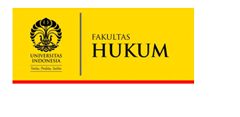Abstract
Co-operative movement in India has a long-standing contribution in the growth of business, agriculture and allied activities. One such cooperative movement in India is the Central Arecanut and Cocoa Marketing and Processing Co-operative Limited (CAMPCO) which was initiated with a joint cooperation between the states of Karnataka and Kerala to create an organized market structure for the two plantation crops namely Arecanut and Cocoa in the backdrop of falling market price of these crops. CAMPCO is an interesting co-operative movement, worth investigating in terms of its evolution, challenges, growth and diversification. The paper tries to examine the factors responsible for justifying the existence of the Co-operative structure and its sustainability in the context of CAMPCO, using a modified cooperative life-cycle framework.
Bahasa Abstract
Gerakan koperasi di India telah lama memberikan kontribusi dalam pertumbuhan bisnis, pertanian, dan kegiatan terkait lainnya. Salah satu contoh gerakan koperasi tersebut adalah Central Areca nut and Cocoa Marketing and Processing Co-operative Limited (CAMPCO). Gerakan ini dibentuk melalui kerjasama negara bagian Karnataka dan Kerala dengan tujuan menciptakan struktur pasar yang terorganisir bagi hasil panen kacang Areca dan coklat, ketika pasar kedua produk tersebut sedang jatuh. CAMPCO adalah contoh gerakan koperasi yang menarik untuk dipelajari secara mendalam terkait evolusi, tantangan, pertumbuhan dan diversifikasinya. Artikel ini berusaha untuk menjelaskan faktor-faktor yang berpengaruh dalam mendorong munculnya struktur dan keberlanjutan CAMPCO dengan menggunakan kerangka siklus hidup koperasi yang dimodifikasi.
References
BRENT HUETH AND ANNE REYNOLDS, 2011, ‘A Life-Cycle Perspective on Governing Cooperative Enterprises in Agriculture’, Choices, Vol.14 (3).
BROMLEY, DANIEL W (1992). ‘The Commons, Property, and Common Property Regimes’ in DANIEL, W BROMLEY edited Making the Commons Work: Theory, Practice and Policy, Institute for Contemporary Studies, California.
CAMPCO Ltd., www.campco.org
CHANDELER JR. ALFRED D, 1962, Strategy and Structure: Chapters in the History of the Industrial Enterprise, Cambridge University Press, Cambridge.
CHANDELER JR. ALFRED D, 1977, The visible hand: The Managerial Revolution in American Business, Cambridge University Press, Cambridge.
CHEN, SHIU-SHENG, 2009, ‘Predicting the bear stock market: Macroeconomic variables as leading indicators’, Journal of Banking and Finance, Vol. 33 (2).
COOK, M.L AND ILOPOULOS, C, 1999, ‘Beginning to inform the theory of the Cooperative Firm: Emergence of new generation cooperative’, The Finnish Journal of Business Economics Vol. 48:525-535.
COOK, M.L 2018, ‘A Life Cycle Explanation of Cooperative Longevity’, Sustainability, MDPI
COOK, M L, 1995, ‘The future of U.S. agricultural cooperatives: A neo-classical approach’. American Journal of Agricultural Economics, Vol. 77(December): 1153-1159.
COOK, M L, 1995, ‘The Future of U.S. Agricultural Cooperatives: A Neo-Institutional Approach’, American Journal of Agricultural Economics 77, no. 5 December (1995): 1153-59.
COOK, M L AND FABIO, R CHADDADN, 2004, ‘Redesigning Co-operative Boundaries- The Emergence of New Models’, American Journal of Agricultural Economics, Vol.86, No.5, December, pp. 1249-1253.
DEEPIKA, M G, 2010, ‘Employee Buy Out and Participatory Management: The Case of Kannan Devan Hills Plantations Company Pvt. Ltd’, Economic and Political Weekly, Vol No XLV (37).
DEEPIKA, M G AND AMALENDU JYOTISHI, 2013, Assessing Risk and Risk Mitigation Strategies of Coffee Cultivation in India; The case of Kodagu District in Karnataka, project report submitted under NRPPD, CDS Trivandrum, March, 2013.
DEORUKHAR, A C, DESAI, A P AND NIKAM, M B, 2005, Marketing of Arecanut in Ratnagiri District of Maharastra, Indian Journal of Arecanut, Spices and Medicinal Plants, Vol 7(4)
DIGBY, M, 1948, World co-operative movement. New York: Hutchinson University Library.
DIRECTORATE OF ARECANUT AND SPICES DEVELOPMENT, http://dccd.gov.in/stat2.htm, Last visited on 26th February 2012
DOWNS, A, 1967. The life cycle of bureaus of bureaus. San Francisco: Little Brown and Company.
FAO, http://www.fao.org/docrep/006/y5143e/y5143e0x.htm, Last visited on 26th February 2012
GALAMBOS LOUIS, 1983, ‘Technology, Political Economy and Professionalization: Central Themes of Organizational Synthesis’, The Business History Review Vol. 57 (4),
GOVERNMENT OF INDIA, www.agricoop.nic.in Department of Agriculture and Cooperation last visited on 26th February 2012
HANSMAN, HENRY, 1999, ‘Cooperatives firms in theory and practice’, The Finnish Journal of Business Economics Vol. 48:387-403.
HELMBERGER, PETER G, 1966, ‘Future Roles for Agricultural Cooperatives Cooperative’, American Journal of Agricultural Economics Vol. 48, 1427-35.
HUETH BRENT AND ANNE REYNOLDS, 2011,’ A Life-Cycle Perspective on Governing Cooperative Enterprises in Agriculture’, Choice, July-September.
JOSE, C T, JAYASHEKHAR S AND BALASIMHA D, 2003, ‘Impact of drought on Arecanut in Karnataka’, Indian Journal of Arecanut, Spices and Medicinal Plants, Vol 5 (4)
JYOTISHI AMALENDU R PARTHASARATHY AND SAJIV MADHAVAN, 2018, "Institutional challenges of common pool resource management." Globalisation, environment and social justice: Perspectives, issues and concerns
KIMBERLY, J R, AND R. H. MILES, The organizational life cycle: Jossey-Bass Publishers, 1987.
KINSEY, J D; SENAUR, B; KING, R P. AND PHUMPIU, P. F, 1996, Changes in Retail Food Delivery: Signals for Producers, Processors and Distributors , Working Paper 96-03, The Retail Food Industry Center, University of Minnesota, St Paul.
KNUTSON, RONALD D, 1985, ‘Cooperative Principles and Practices: Future Needs’, in Lee Schrader and William Dobson edited Farmer Coopeatives for the Future, West Lafayette, IN-NCR-140, Purdue University.
KURIEN J, 1980, ‘Fishermen's Cooperative in Kerala: A Critique’, BOBP/MIS 1, Madras.
LA PORTA; RAFAEL, VISHNY, LOPEZ-DE‐SILANES AND FLORENCIO, SHLEIFER ANDRIE, ‘Law and finance’, Journal of Political Economy 106, no. 6 (1998): 1113-1155.
LE VAY, C, 1983, ‘Agricultural Co-operative Theory: A Review’ Journal of Agricultural Economics 34, no. 1, 1-44.
MINISTRY OF AGRICULTURE, GOVERNMENT OF INDIA, 2009, Report on the High Powered committee on co-operatives, MAY, 2009.
MERRY, S. E. 1988. Legal pluralism. Law & Soc'y Rev., 22, 869.
OSTROM, ELINOR, 1990, Governing the Commons; The Evolution of Institutions for Collective Action, CUP, New York.
OSTROM, ELINOR, 1992, ‘The Rudiments of a theory of the Origins, Survival, and Performance of Common- Property Institutions’ in DANIEL, W. BROMLEY edited Making the Commons Work: Theory, Practice and Policy, Institute for Contemporary Studies, California.
RUNGE, C. FORD, 1985, ‘The Innovation of Rules and the Structure of Incentives in Open Access Resources’ in The American Journal of Agricultural Economics, Vol. 67, May.
RUNGE, C. FORD, 1992, ‘Common Property and Collective Action in Economic Development’ in DANIEL W, BROMLEY edited, Making the Commons Work: Theory, Practice and Policy, Institute for Contemporary Studies, California.
SAPOVADIA, V.K. and PATEL, S.V., 2012, ‘Humanization: Explaining the Law of Cooperatives in India’. International Cooperative Summit.
SHAH, TUSHAR, 1993, Groundwater Markets and Irrigation Development, Oxford University Press, New Delhi.
SIVRAMKRISHNA, SASHI and AMALENDU JYOTISHI, Monopsonistic exploitation in contract farming: articulating a strategy for grower cooperation. Journal of International Development, Vol. 20: 280–296.
STAATZ, JOHN M, 1987, ‘Recent Developments in the Theory of Agricultural Cooperation’, Journal of Agricultural Cooperation 2 (1987):74-95.
TUASON, R. V. 1973, ‘Corporate Life Cycle and the Evaluation of Corporate Strategy’ Academy of Management National Meetings, Division of Business Policy and Planning, Boston, Massachusetts,
TYAGI C R, 1995, Problems and Prospects of Sugar Industry in India: Alternative Strategies for Development, Mital Publications, New Delhi
VIGHNESHWARA, 2001, Adike Marukatte, Andu, Indu, Mundu, Varmudi Prakashana, Karnataka, India
WHETTEN, D. A. 1980, ‘Organizational Decline: A Neglected Topic in Organizational Science.’ The Academy of Management Review 5, no. 4 Pp: 577-588.
Recommended Citation
Jyotishi, Amalendu and M.G., Deepika
(2022)
"Understanding Institutional Life-Cycle and Sustainability of Co-operative Model: A Case Study of CAMPCO, India,"
The Indonesian Journal of Socio-Legal Studies: Vol. 1:
No.
2, Article 3.
DOI: 10.54828/ijsls.2021v1n2.3
Available at:
https://scholarhub.ui.ac.id/ijsls/vol1/iss2/3


